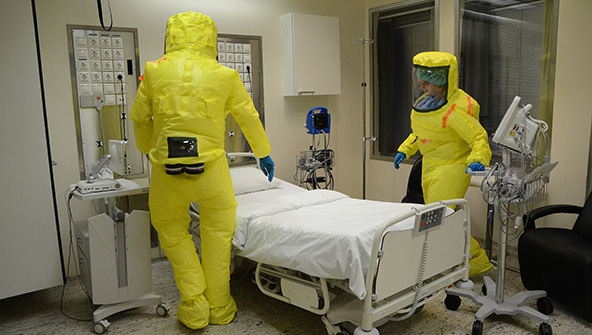A recent outbreak of the Ebola virus is resulting in global media attention and reminding employers everywhere — in all industries — of the importance of following safety procedures in workplace settings. While this recent outbreak of Ebola has been mostly confined to Liberia — where at least 188 healthcare workers have become infected and thousands of citizens have died—the presence of a single Ebola patient in Texas recently prompted the Obama administration to develop new screening protocols for airline passengers. Clearly, the U.S. government is taking seriously the potential exposure of Americans to infectious agents.
Ebola typically manifests symptoms two or three weeks after exposure, and is often fatal. Signs of infection usually include flu-like symptoms, and up to 50% of cases also involve bleeding from mucous membranes and skin irritations. Ebola is spread through direct contact with an infected person or through materials (like needles) that have been exposed to an infected person. Consequently, the CDC recommends that healthcare workers who encounter a patent or handle infectious Ebola specimens follow the safety procedures outlined in the OSHA bloodborne pathogens standard. Researchers studying Ebola are required to implement biosafety level 4 (BSL-4) safety protocols—the most stringent in existence—which mandate positive pressure personnel suits with segregated air supplies, showers, a vacuum room, an ultraviolet light room, and multiple airlocks. There are only fifteen BSL-4 facilities in the United States.
While the risk of contracting Ebola in the United States or Canada is still statistically miniscule, this new wave of awareness drives home the importance of educating employees about how to properly protect themselves against bloodborne pathogens or similar hazards.
Updated safety and hazard information for the Ebola virus is available on the MSDSonline website.
In addition, MSDSonline’s library of workplace training courses contains an in-depth training on bloodborne pathogens—as well as a 25-minute “refresher course” version—which includes a review of:
- Best practices for minimizing health risks for workers exposed to blood and other potentially infections substance
- Related hazards and modes of transmission
- Standard precautions for handling bloodborne pathogens
- Appropriate engineering controls and work practices
- Recommended PPE to prevent exposure
- Appropriate emergency procedures for incidents in which a bloodborne pathogen exposure has already taken place
These bloodborne pathogen trainings represent only two out of nearly 100 expert-reviewed MSDSonline courses designed to protect workers and to help employers satisfy federal and state compliance training requirements. Available anytime, these on-demand workplace solutions give you the flexibility to access trainings as it fits your schedule—educating employees one-by-one as needed, or all at the same time. MSDSonline’s Standard Package is ideal for training up to 100 learners, and our Premium Package is ideal for group larger than 100.
Whatever your training needs, you can start your search at MSDSonline’s workplace training page.







